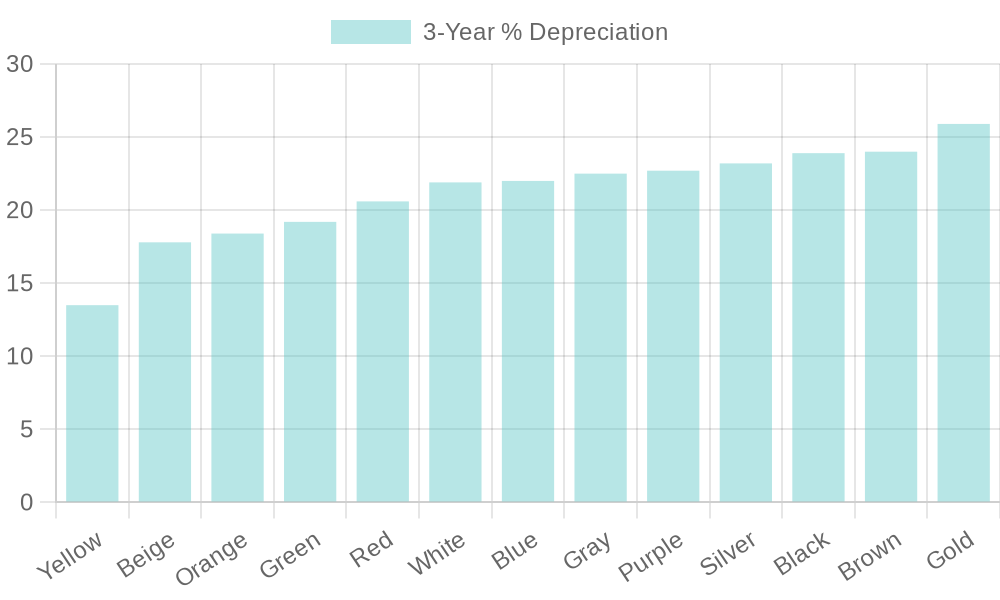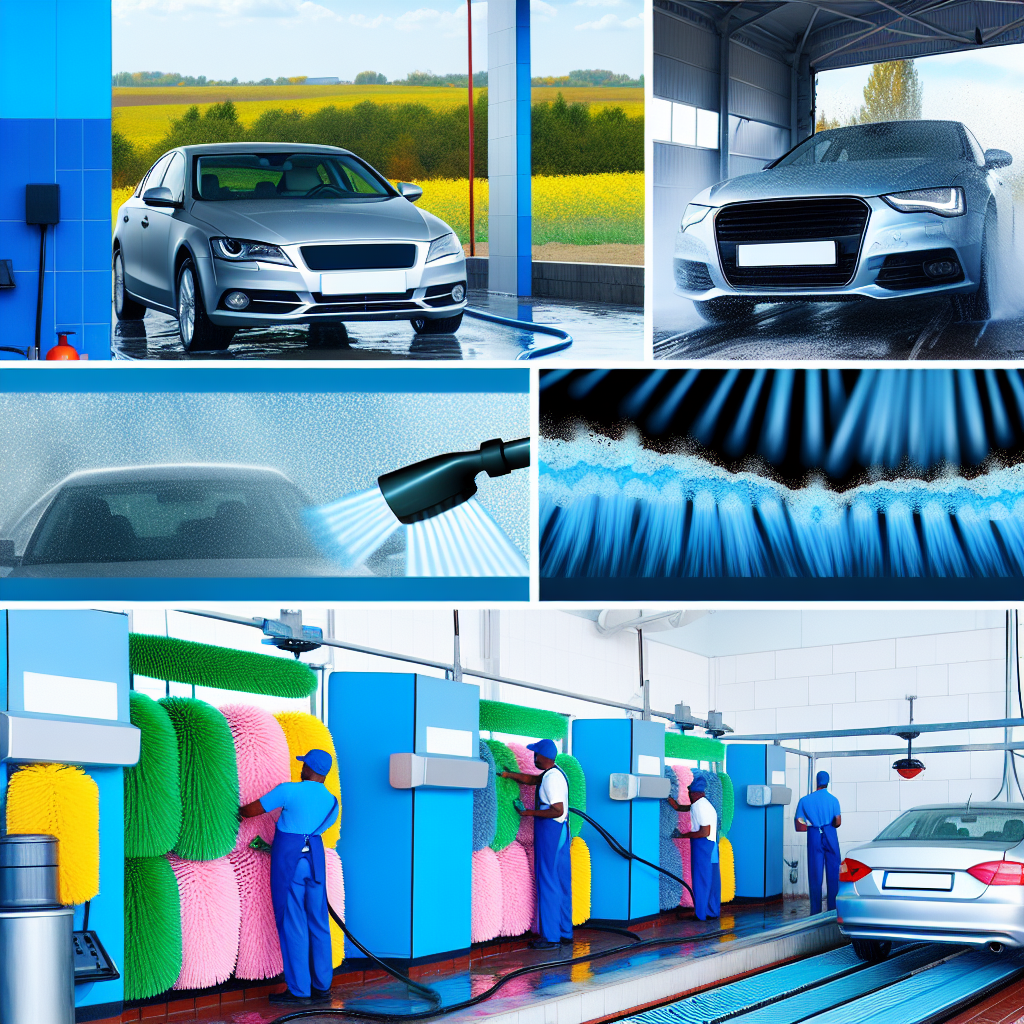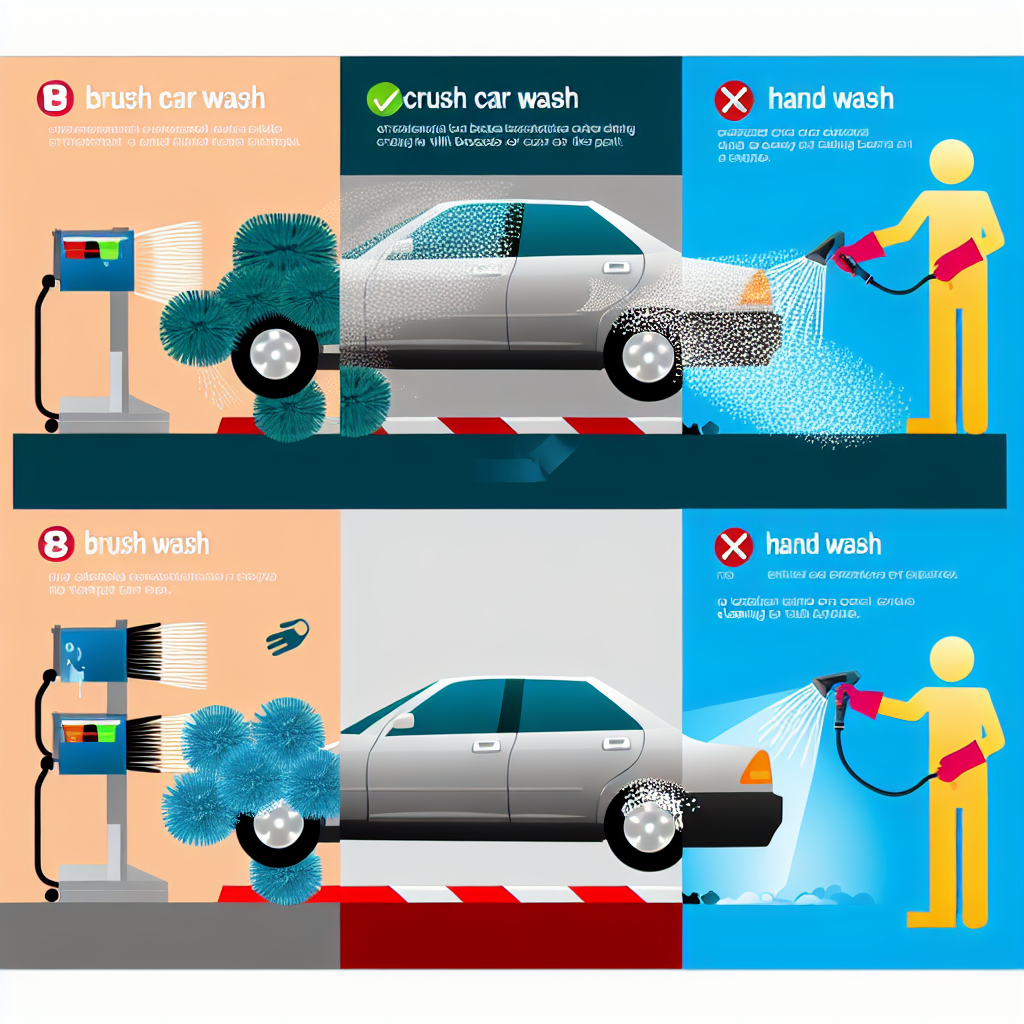When it comes to maintaining the charm and value of your vehicle, automotive paint care stands at the forefront. For many car owners, particularly those with Ford Avalanches, taking the right steps in preserving that glossy coat can significantly influence resale value. Imagine deciding to sell your truck after a few years, only to find that the once-vibrant paint has dulled or developed unsightly swirl marks. This scenario is all too common and can stem from neglecting proper paint care routines. With our busy lives, it’s easy to overlook this crucial aspect of vehicle ownership, but investing time and effort into automotive paint care doesn’t just keep your vehicle looking sharp; it can protect your investment for years to come. So, how do you ensure your Ford Avalanche (or any vehicle, for that matter) maintains its pristine appearance? Let’s delve into the world of automotive paint care and uncover its undeniable relevance to resale value, along with actionable tips tailored just for you.
In a discussion among Ford truck enthusiasts, a valuable piece of advice was shared: “The salesman advised me not to use the type of wash with the spinning brushes on the new truck as it will create swirl marks in the Avalanche paint.”
This quote illustrates common concerns among owners regarding how car washes can affect their vehicle’s paint quality. It also highlights the importance of being cautious with automatic car washes, especially those utilizing spinning brushes, which can indeed be detrimental to the finish.
Paint Care Practices
Maintaining the aesthetic and protective quality of automotive paint is essential for vehicle owners, especially if you anticipate reselling your car in the future. Here are some best practices for maintaining your vehicle’s paint, with particular emphasis on hand washing, protective coatings, and avoiding abrasive cleaners.
Hand Washing Techniques:
- Use the Two-Bucket Method: This helps minimize the transfer of dirt back onto the paint and reduces the risk of scratches and swirl marks.
- Choose pH-Balanced Car Shampoo: Opt for a shampoo specifically designed for automotive finishes to avoid stripping wax and damaging protective coatings.
- Soft Washing Tools: Use microfiber or lambswool mitts as they lift dirt gently without scratching; avoid rough sponges or brushes.
Drying Methods:
- Avoid Air Drying: Water spots can form from mineral deposits. Instead, use a clean microfiber towel for drying.
Avoiding Abrasive Cleaners:
- Use Only Automotive-Safe Products: Avoid household cleaners with harsh chemicals, as they can damage paint and strip protective layers.
Importance of 2K Clear Coat:
- Enhanced Protection: A 2K clear coat forms a durable barrier, protecting against contaminants and UV rays, preserving the glossy appearance and resale value.
- Proper Application: Ensure even coverage and allow sufficient drying time for maximum longevity and effectiveness of the coating.
By adhering to these practices, you will be well-equipped to maintain your vehicle’s paint in optimal condition, preserving both its appearance and value over time. Remember, a well-preserved vehicle is not only a pleasure to own but also an investment that pays off during resale.
The Impact of Proper Paint Care on Vehicle Resale Value
Proper automotive paint care is essential in maintaining the resale value of your vehicle. A well-kept exterior not only enhances aesthetic appeal but also reflects the owner’s commitment to the vehicle’s maintenance. Here are some insights into how proper care can significantly uplift your car’s resale value:
- Value Loss Due to Paint Damage: Paint damage can lead to a reduction in a vehicle’s value of up to 10%. Addressing these damages can recover a significant portion of this loss. In fact, a professionally conducted repair can elevate the trade-in value by as much as 8-10% compared to a car that has never undergone paint restoration. These numbers illustrate that investing in proper paint care can be financially beneficial in the long run. [Texas Collision Centers]
- Color Considerations: The color of your vehicle plays a critical role in its depreciation rate. For example, yellow cars tend to lose only 4.5% of their value over three years, a stark contrast to the average 15% depreciation across all colors. This resonance is due to the demand and rarity associated with specific colors. [Forbes]
- Quality Perception: A car with a clean and shiny exterior signals to potential buyers that it has been well-maintained. Visible blemishes, scratches, or fading paint typically lead to a decrease in perceived value, making the vehicle less attractive to interested buyers. [Automotive Quest]
- Professional Detailing Advantages: Professional exterior detailing can provide a noticeable boost to a vehicle’s resale value—up to 5% or more in some cases. For instance, for a car valued at $30,000, this equates to an added $1,500 in resale price. Therefore, investing in detailing prior to a sale can be a wise financial decision. [Rick’s Reflections]
- Importance of Quality Repairs: Be wary of low-quality repaint jobs, as they can significantly degrade the resale value. Buyers may be skeptical of the vehicle’s upkeep if they notice uneven finishes or peeling paint, which could deter them from making a purchase at a fair price. [Mobile Brewer]
In summary, engaging in proper paint care—whether through regular maintenance, timely repairs, or professional detailing—can have a substantial positive effect on a car’s resale value. The condition and color of the vehicle’s paint are not just cosmetic concerns; they are pivotal factors in influencing buyer perceptions and ultimately, the vehicle’s market value. By prioritizing paint care, car owners can safeguard their investments and enhance their chances of a successful resale.
The Impact of Proper Paint Care on Vehicle Resale Value
Proper automotive paint care is essential in maintaining the resale value of your vehicle. A well-kept exterior not only enhances aesthetic appeal but also reflects the owner’s commitment to the vehicle’s maintenance. Understanding this vital connection can lead to fortifying your investment. Here are some insights into how proper care can significantly uplift your car’s resale value:
- Value Loss Due to Paint Damage: Paint damage can lead to a reduction in a vehicle’s value of up to 10%. Addressing these damages effectively recoups a significant portion of this loss. For example, a professionally conducted repair can elevate the trade-in value by as much as 8-10% compared to a car that has never undergone paint restoration. These numbers illustrate that investing in proper paint care is financially beneficial in the long run. [Texas Collision Centers]
- Color Considerations: The color of your vehicle plays a critical role in its depreciation rate. For instance, yellow cars tend to lose only 4.5% of their value over three years, contrasting sharply with the average 15% depreciation across all colors. This difference resonates from the demand and rarity associated with specific colors, showing that thoughtful color choices can impact resale value. [Forbes]
- Quality Perception: A car with a clean and shiny exterior signals to potential buyers that it has been well-maintained. Conversely, visible blemishes, scratches, or fading paint typically lead to a decrease in perceived value, making the vehicle less attractive to interested buyers. This connection illustrates the importance of paint care in not only maintaining the car’s appearance but enhancing its marketability as well. [Automotive Quest]
- Professional Detailing Advantages: Engaging with professional exterior detailing can provide a noticeable boost to a vehicle’s resale value—up to 5% or more in some cases. For a vehicle valued at $30,000, this equates to an added $1,500 in resale price. Thus, investing in detailing prior to a sale emerges as a wise financial decision that can significantly enhance the vehicle’s selling price. [Rick’s Reflections]
- Importance of Quality Repairs: Be wary of low-quality repaint jobs, as they can significantly degrade the resale value. Prospective buyers may be skeptical of a vehicle’s upkeep if they notice uneven finishes or peeling paint, which could lead to hesitance in making a purchase at a fair price. This awareness underscores the importance of ensuring quality in repairs to protect investment value. [Mobile Brewer]
In summary, engaging in proper paint care—whether through regular maintenance, timely repairs, or professional detailing—can have a substantial positive effect on a car’s resale value. The condition and color of the vehicle’s paint are not just cosmetic concerns; they play a pivotal role in influencing buyer perceptions and ultimately, the vehicle’s market value. By prioritizing paint care, car owners can safeguard their investments and enhance their chances of a successful resale.
| Car Wash Type | Impact on Vehicle Paint | Potential to Cause Swirl Marks |
|---|---|---|
| Spinning Brushes | Can cause scratches and damage | High |
| Hand Wash | Gentle, preserves paint shine | Low |
| Brushless Car Wash | Effective cleaning without damage | Minimal |
Common Misconceptions About Car Washing and Paint Care
Car washing and paint care often come with a set of misconceptions that can lead owners to make poor choices regarding their vehicle’s maintenance. In a recent discussion on a Ford truck enthusiasts forum, various opinions and misunderstandings were highlighted.
One prevalent misconception is that all car washes are harmless to automotive paint. According to one quote from a forum user,
“The salesman advised me not to use the type of wash with the spinning brushes on the new truck as it will create swirl marks in the Avalanche paint.”
This reflects a genuine concern among vehicle owners who worry about the negative effects certain types of car washes could have on their paintwork. It emphasizes that while some automatic washes may be effective in cleaning, they can also inadvertently cause damage to your vehicle’s exterior. Many believe that simply having a wash is enough, but they overlook the potential risk factors, such as harsh spinning brushes.
Another common myth is the belief that hand washing is universally safe and better than automatic washes. While hand washing tends to be gentler, it is still important to adopt proper techniques to avoid scratches. One user noted,
“It sounds like good advice but wondering if anyone has any info to back up the salesman’s claim.”
This illustrates a need for car owners to seek validation and technical explanations to back up their practices, which can help in navigating the wide array of car washing options available. Adopting proper hand washing methods can significantly reduce the likelihood of damaging the paint.
Additionally, there is a misconception that using household cleaning products for a car wash is acceptable. Some drivers believe that a simple dish soap will suffice for cleaning their cars without reflecting on the long-term damage these products can inflict on the protective layers of the paint. This viewpoint underscores the necessity of using pH-balanced automotive shampoos to preserve the integrity of the vehicle’s finish.
These misconceptions highlight the importance of educating oneself about proper car wash practices and understanding the characteristics of different products to ensure that your vehicle retains its shine and value. By addressing these concerns with informed practices, you can better protect your automotive investment from unnecessary damage during routine car washing.
Resale Value Statistics Related to Paint Quality and Care
The resale value of Ford trucks and similar vehicles is heavily influenced by paint quality and maintenance practices. Here is a summary of statistics and expert insights demonstrating this relationship:
- Impact of Paint Color on Depreciation:
- Studies by iSeeCars.com indicate that color has a significant effect on how quickly a car depreciates. For instance, yellow vehicles lose about 24.0% of their value over three years, while orange causes a 24.4% depreciation. This is notably lower than the average depreciation rate for all vehicles, which sits at 31.0%.
- In contrast, neutral colors like black and white experience higher depreciation rates of 31.9% and 32.1%, respectively. Therefore, choosing a less common color can positively influence resale value. [motor1.com]
- Specific Examples for Trucks:
- Beige-colored trucks have the best resale rates. Vehicles like the Toyota Highlander, which offers a unique beige hue, maintain higher values partly due to demand. Meanwhile, Ford trucks painted in orange also tend to hold their value well, indicating that consumers are willing to pay extra for these vibrant colors. [wkbn.com]
- Importance of Maintenance:
- Proper paint care can dramatically affect a vehicle’s market value. A well-maintained exterior free of scrapes and rust signals to potential buyers that the owner has taken care of the vehicle. In contrast, visible damage can lead to lower buyer interest and reduced perceived value. [allwheelstrucks.com]
- Expert Insights:
- Industry expert Karl Brauer highlights that while commonplace colors such as black and white dominate the market, this can result in increased depreciation rates due to oversaturated inventory. Conversely, vehicles painted in less common colors can appeal to buyers and retain higher values. [motor1.com]
In conclusion, both the choice of paint color and regular maintenance practices are crucial in determining the resale value of vehicles like Ford trucks. Owners can maximize their investment by opting for unique colors and ensuring their vehicle is well maintained, thereby enhancing its appeal in the used market.
Resale Value Statistics Related to Paint Quality and Care
The resale value of Ford trucks and similar vehicles is heavily influenced by paint quality and maintenance practices. Here is a summary of statistics and expert insights demonstrating this relationship:
- Impact of Paint Color on Depreciation:
- Studies by iSeeCars.com indicate that color has a significant effect on how quickly a car depreciates. For instance, yellow vehicles lose about 24.0% of their value over three years, while orange causes a 24.4% depreciation. This is notably lower than the average depreciation rate for all vehicles, which sits at 31.0%. The overall impact of color on depreciation can be visualized in the following chart:

This graph showcases the depreciation rates of various vehicle colors over a three-year period, highlighting how specific colors enhance or reduce resale value.
- Specific Examples for Trucks:
- Beige-colored trucks have the best resale rates. Vehicles like the Toyota Highlander, which offers a unique beige hue, maintain higher values partly due to demand. Meanwhile, Ford trucks painted in orange also tend to hold their value well, indicating that consumers are willing to pay extra for these vibrant colors. [wkbn.com]
- Importance of Maintenance:
- Proper paint care can dramatically affect a vehicle’s market value. A well-maintained exterior free of scrapes and rust signals to potential buyers that the owner has taken care of the vehicle. In contrast, visible damage can lead to lower buyer interest and reduced perceived value. [allwheelstrucks.com]
- Expert Insights:
- Industry expert Karl Brauer highlights that while commonplace colors such as black and white dominate the market, this can result in increased depreciation rates due to oversaturated inventory. Conversely, vehicles painted in less common colors can appeal to buyers and retain higher values. [motor1.com]
In conclusion, both the choice of paint color and regular maintenance practices are crucial in determining the resale value of vehicles like Ford trucks. Owners can maximize their investment by opting for unique colors and ensuring their vehicle is well maintained, thereby enhancing its appeal in the used market.
In closing, it’s clear that maintaining the quality of your vehicle’s paint is integral to preserving its resale value. We explored various methods, from regular hand washing to the application of protective coatings like 2K clear coats, that not only enhance the aesthetic appeal of your car but also reflect a commitment to preserving its value. The impact of paint care cannot be underestimated; damaged or neglected paintwork can lead to significant value depreciation and a loss of buyer interest.
As you embark on your automotive care journey, remember that diligence in paint care will yield benefits not just in the present, but in any future sales as well. We encourage readers to share their own experiences or ask questions about car washes and paint maintenance. Your stories and inquiries can foster a community of informed car owners eager to protect their investments!

This image illustrates various types of car washes, including brushless, hand wash, and automatic wash methods.

This image provides a detailed illustration of car wash methods such as brush car washes, brushless options, and hand washing, highlighting their cleaning techniques and impact on vehicle paint.
Personal Testimonials about Car Washing and Paint Care
Here are a few testimonials from car owners who have focused on paint care and their experiences with different washing methods:
- David M.: “After investing in a 2K clear coat for my Ford Avalanche, I noticed not only an improvement in the shine but also a significant reduction in swirl marks. Hand washing is a ritual for me now, and I wouldn’t go back to automatic washes after experiencing the difference.”
- Lisa T.: “I always thought a wash was just a wash, but after hearing about the potential damages from spinning brushes, I decided to change my car care routine. Now I hand wash every two weeks using pH-balanced shampoo and see the results – my car looks brand new, and I know I’m protecting its value.”
- Mark R.: “Initially, I was skeptical about the importance of paint care, but I paid attention to a buyer’s feedback when I sold my last truck. The clean, shiny paint definitely attracted more interest and helped me get a better price. Now I regularly detail my vehicles to preserve that appeal.”
These testimonials illustrate the impact of proper car wash techniques and paint care on vehicle appearance and resale value. It also shows how personal experiences can shape car owners’ attitudes towards maintenance and care of their vehicles.
